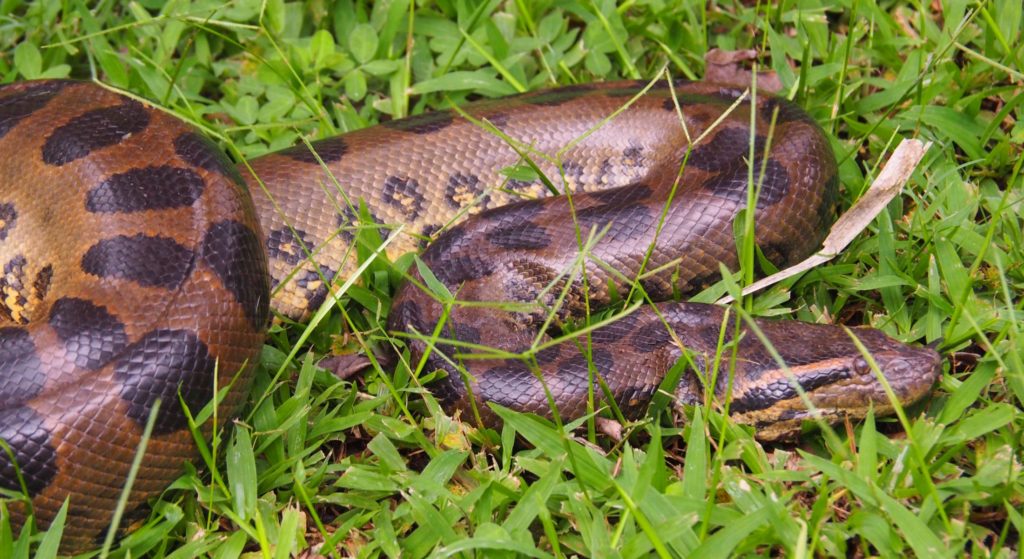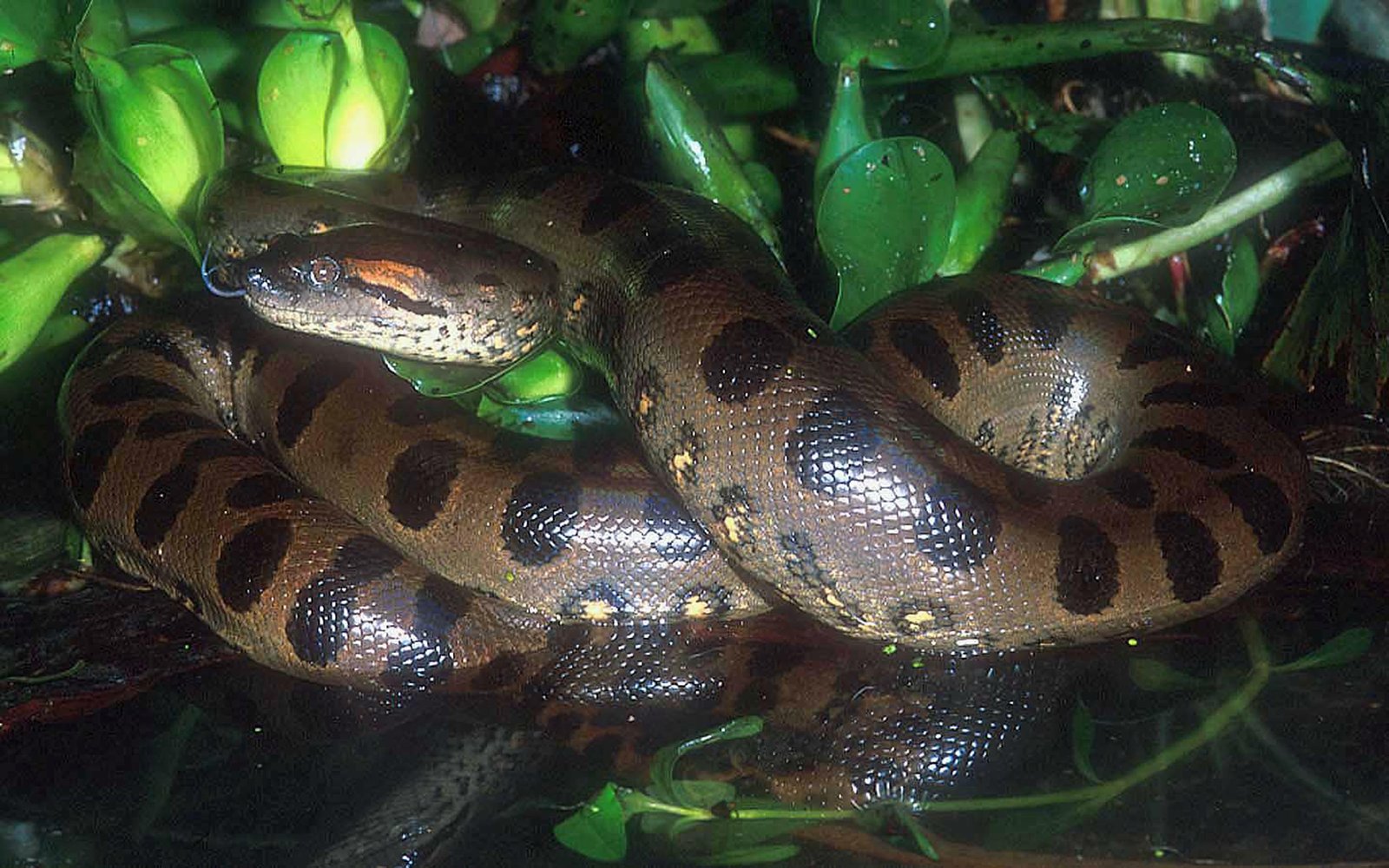

The powerful muscles of the anaconda makes it a skillful swimmer, the green anaconda can travel short distances underwater or on the surface very quickly, where it is capable of reaching a speed of 6 meters per second, but on the ground their movements are slow and heavy. In that environs, this anaconda presents spurs which are remnants of locomotives atrophied limbs. There is a kind of anaconda which the only part of the entire body is not covered by scales, these ones inhabit in the Caudal region, near the cloaca zone. The snout is covered for six thickened scales, three on each side, which are the most distinctive trait that separates the genus Eunectes species from the closely related Boa. The olfactory receptors are found on the tongue, like all the snakes. The eyes of the anaconda are small and have the typical vertically elliptical pupil of the poisonous species and the boids, the vision of the anaconda is not very acute. The nostrils and eyes are in an elevated position, to make breathing and perception easier during the long periods that the anaconda spend submerged. The head is narrow and does not have a distinctive neck. The body is broad and muscular, adapted to kill their prey by constriction. The belly is more clearly, and the end of the tail shows yellow and black designs that are unique by each one. The anaconda is dark green in color with oval black spots and ocher on the flanks. The females are larger than the males, this is the most marked sexual dimorphism case into the order of these reptiles are grouped ( Squamata).

The anaconda is the biggest snake of America and can exceed the 8 meters long and weight more than 200 kg. Also they can be founded in countries as: Brasil, Bolivia, Colombia, Guyana, Peru, Paraguay, Venezuela and Trinidad Island. The anaconda is endemic from South America inhabits the basins of the Orinoco and the Amazon rivers. In length, it competes only with the Southeast Asian reticulated python ( Python reticulatus). Species recorded during ‘Amazon Anaconda.The green anaconda (Eunectes murinus), its a constrictor snake of the boas family, endemic from the tropical rivers of South America, of all the snakes this is which has the highest weigh and perhaps the largest known snake. How and why do they differ? How can two species of anaconda co-exist in the same flooded savannas and watercourses? And how big can they grow?Ī close view of a De Schauensee’s anaconda (Eunectes deschauenseei), the head is similar to that of the yellow anaconda (E.notaeus). It has been his long term aim to capture one of these poorly documented anacondas and compare it with a green anaconda from the same area.

Mark O’Shea has always wanted to visit the huge island of Marajo, an island the size of Switzerland and the largest island in the Amazon river mouth where the opposite banks are 200 miles apart or the distance from London to Paris. There are three species of anacondas, the wide-spread common green anaconda ( Eunectes murinus), which occurs throughout the Amazonian and Orinoco river systems, the yellow anaconda ( E.notaeus) from southern Brazil, Paraguay and northern Argentina, and the rare and little known de Schauensee’s anaconda from the Ilha Marajo in the mouth of the Amazon. Location: Ilha Marajo in the Mouth of the Amazon is the size of Switzerland. Location: Ilha Marajo, Ilha Caviana & Ilha Mexicana, Para, Brazil

Target Species: De Schauensee’s anaconda, Eunectes deschauenseei


 0 kommentar(er)
0 kommentar(er)
